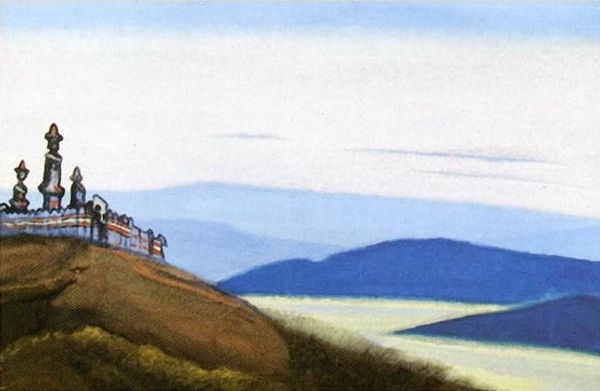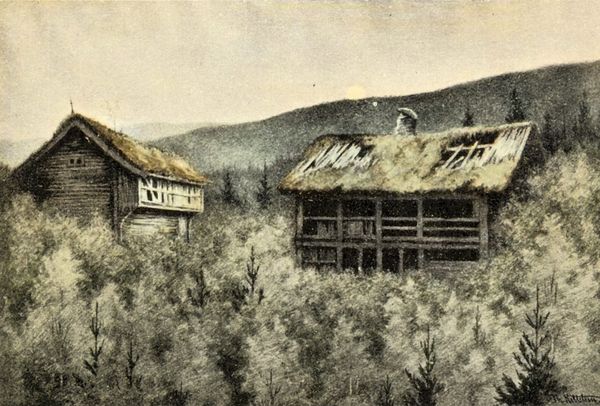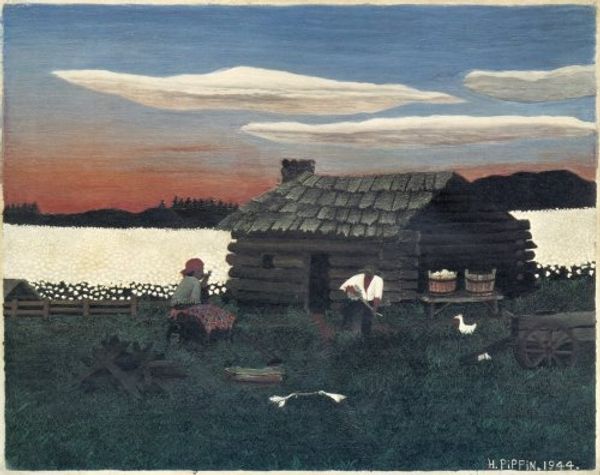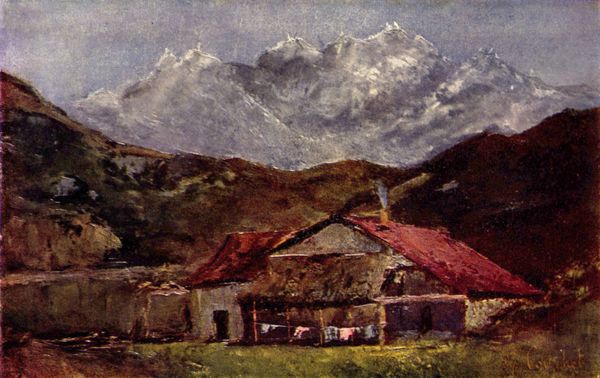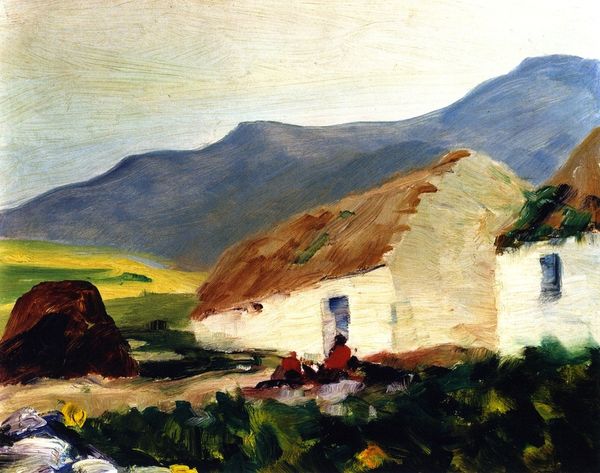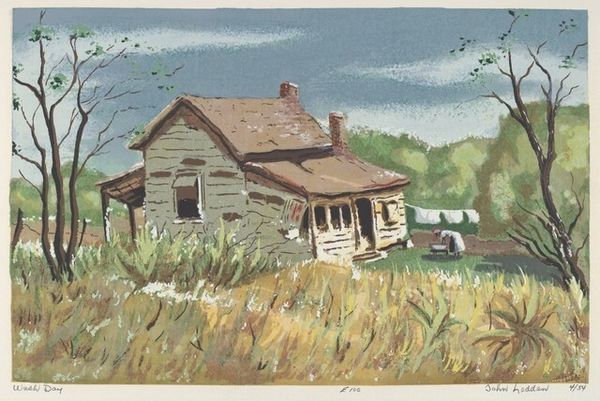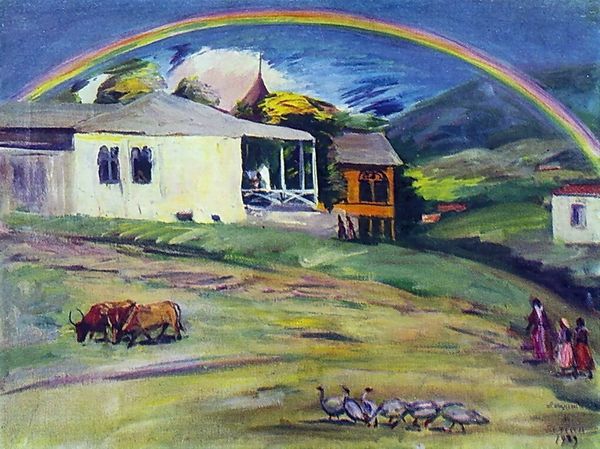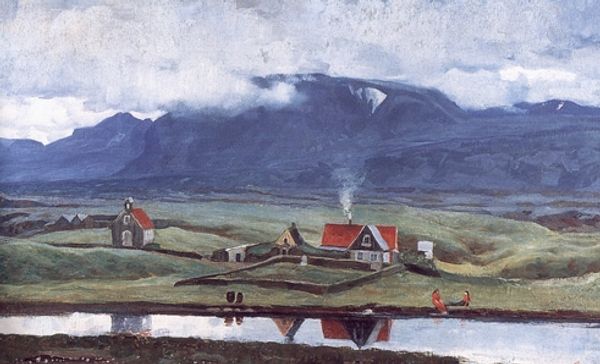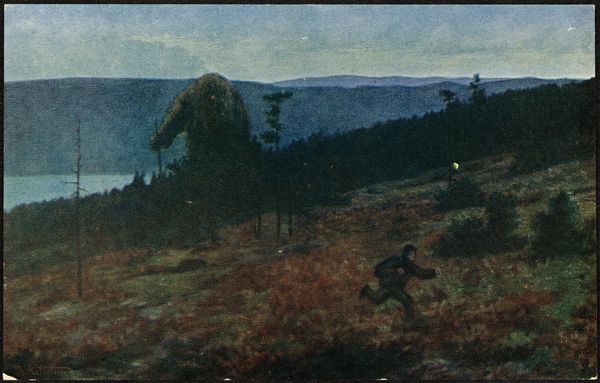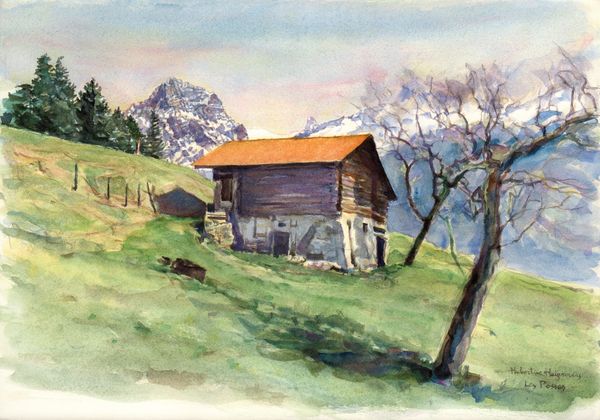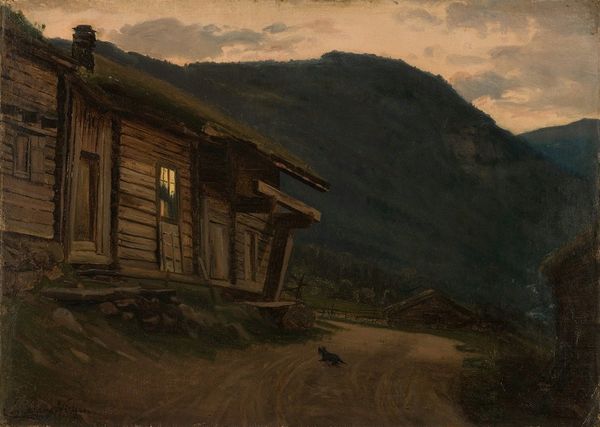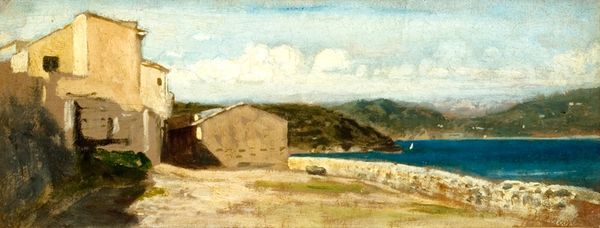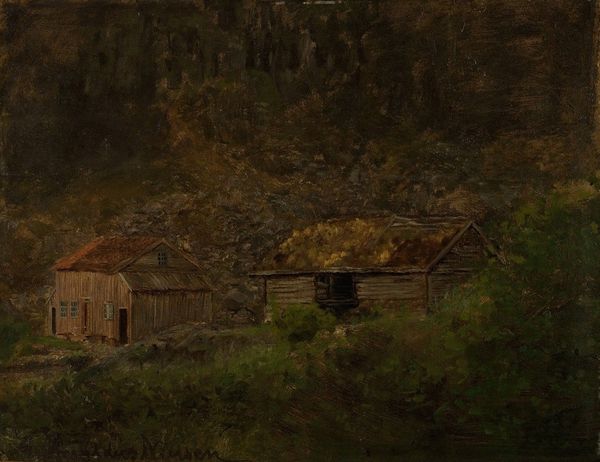
painting, oil-paint
#
painting
#
oil-paint
#
landscape
#
figuration
#
oil painting
#
romanticism
#
realism
Copyright: Public domain
Editor: We’re looking at Theodor Kittelsen’s painting "Langebrata," executed in oil paint. The lack of a definitive date makes it all the more intriguing, don't you think? There's something very isolating about this cabin tucked into the landscape. What elements jump out to you? Curator: Certainly, we can begin with an analysis of the composition itself. Observe how Kittelsen uses a limited palette, focusing on earth tones and muted greens. The structure of the cabin, juxtaposed with the vastness of the surrounding landscape, creates a compelling tension. How does the interplay of light and shadow guide your eye? Editor: The light seems to emphasize the isolation, making the dark shadows so prominent and the house seem alone. It looks very detailed and defined close up, though, even if its in this wilderness! Curator: Exactly! Note how the impasto technique brings texture to the cabin's walls and the grassy roof. We can observe that these horizontal lines contrast with the implied verticality of the figure. Editor: That's interesting. Why does the figure lack a definite silhouette? Curator: The figure is integrated with the surrounding darkness; its presence does not create focal distraction. Perhaps the work can be seen not so much about a man against landscape but about a certain atmosphere and aesthetic appreciation. Editor: I see now. That subtle treatment definitely shifts the focus to the entire composition rather than singling out any one element. That adds a new dimension to how I see Kittelsen’s choices in his oil painting! Curator: Yes, it’s through these formal considerations that we begin to understand Kittelsen's visual strategy. Editor: I appreciate seeing that the focus on pure aesthetics allows an increased sensitivity to composition!
Comments
No comments
Be the first to comment and join the conversation on the ultimate creative platform.
